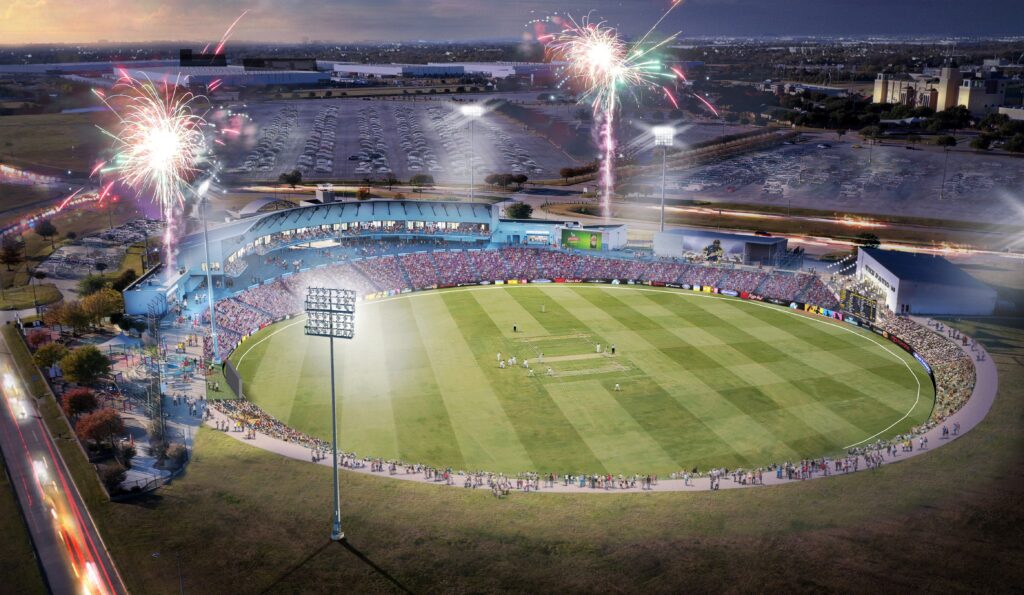
This week, Major League Cricket, the most significant and well-funded effort to bring a top-level domestic cricket competition to the United States of America, released its inaugural schedule to little local media fanfare. Despite substantial investment and the inclusion of a plethora of international talent, local media coverage of the league remains scant. In fact, none of the largest newspapers in MLC team markets covered the schedule release, and nearly all failed to cover March’s inaugural player draft.
While there have been a few more stories in local alternative news outlets – the Dallas Observer or the Washingtonian, for example – major newspaper coverage has been difficult to come by. Maybe the most significant exception has been the Dallas Morning News. However, nearly all of their coverage has been lodged in the Business section, rather than the sports section. What little newspaper coverage is out there is often in the same vein: this is an interesting business story, but not (seemingly) a compelling sports story.
I’ve spent a great deal of time thinking about these types of issues. I’ve written previously about Americans’ reactions to sports not seen as prototypically “American.” And while I am not sure much of what I was writing about 15-20 years ago, it still holds: Certain features of the mainstream sporting landscape remain stubborn. Mainstream sports media in the US still spends much of its focus on what we might think of as American legacy sports: (gridiron) football, baseball, basketball and, to a lesser extent, hockey. What additions have been made to this landscape are relatively modest, if still significant: NASCAR and soccer (don’t even get me started on the “football” vs. “soccer” debate. I’m over it and you should be, too).
Also Read: The Paradigm-shifting IPL Economy – 16 seasons, and an Average Franchise Value of a Billion Dollars
The most significant question raised by the paucity of legacy media coverage of MLC is whether or not it matters for the league’s success. More and more, it simply doesn’t. Everyone with an interest in a “niche” activity knows exactly where to go or how to find what they need without resorting to newspapers or TV outlets. Living in Columbus, Ohio (not a cricket hotbed, though we do have a small club recreational competition), I have two cricket apps on my phone (I know, I know… I could have many more) and access to Willow TV and ESPN+. I can, for all intents and purposes, watch as much cricket as I want and be as knowledgeable as I choose. I watched tennis in Stuttgart this morning and, during the European domestic seasons, I can watch soccer from about the time I wake up until the time I go to bed. And I haven’t opened up a local newspaper sports section in a decade.
The media landscape has changed so much in the past two decades that the old models simply do not matter anymore. For better or for worse – and we could talk for days about the consequences of local media devastation in the internet age – the success of MLC will not be determined (and probably isn’t affected at all) by whether or not each market’s major newspapers send beat reporters to cover MLC. They certainly will not. If the past is any indication, their coverage will be somewhere between minimal and nonexistent outside of its novelty.
The real question, then, is just how much MLC’s reach exceeds their grasp. What are their ambitions, and what counts as success? Can MLC be successful – or even be sustained – without converting a single fan in the US? Can fans of the San Francisco Unicorns, for example, attach themselves to a team that only plays in Texas and North Carolina this year (and maybe longer)? How strong are the convictions of its investors? How long will they need to be patient in building a sustainable following in a globalized age? Maybe no time at all. The worldwide media infrastructure is certainly in place to help MLC make an immediate impact, as is the talent.
The calendar is largely clear bar The Ashes. The entire competition will last 17 days this first year, making it somewhat akin to a major soccer tournament rather than a football, baseball, or basketball season. There are reasons to be optimistic about the present and future of MLC. One thing is clear though: it won’t need the New York Times to grasp at its goals.